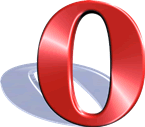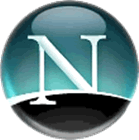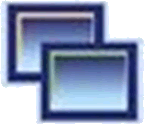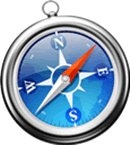
A major innovation came with the Telstar Adidas in Mexico 1970, which inaugurated the white and black balls. Ideal for that in the recently released lucieran telecasts of the matches (color television first arrived in Argentina 78). Since then, the black and white color is the "official" footballs.
Every four years, some technological improvements introduced in the balls and more than a new look to identify the ball with the World Cup host country. Important improvements
followed with Germany 1974 (Telstar and Chile), Argentina 1978 (Tango), Spain 1982 (Tango Spain), Mexico 1986 (Aztec), Italy 1990 (Etruscan), United States 1994 (Questra) France 1998 (Tricolore), Korea-Japan 2002 (Fevernova), Germany 2006 (Teamgeist), South Africa 2010 (Jabulani).
belongs to Adidas, official designer of the ball of the FIFA World Cup since 1970.
The adidas Telstar, Mexico 1970

was the first white soccer ball decorated with black pentagons, an image that today is already a classic. He had the gold logo. His name meant "TV star", since Mexico 1970 was the first World Cup to be televised live and direct.
Telstar The innovative design caused the ball was much more visible in black and white TV at the time, and even today it remains the archetype of all generic footballs.
The adidas Telstar and adidas Chile, Germany 1974
In this world we used two official Adidas ball. On the one hand reappeared Telstar, that yes: the logo was black instead of gold from the previous model. On the other hand, and building on the success of Telstar, Adidas introduced a new all-white version called Chile, in honor of a completely white ball used in the World Cup Chile 1962.
materials and techniques used in the Telstar and Chile were identical to those used four years earlier.
The adidas Tango, Argentina 1978
That year football design experienced another revolution with the presence of the Tango. Its twenty pieces 'triads' created an optical illusion that there were 12 identical circles.
During the following five editions of the FIFA World Cup (until 1998 included), the official ball is based on this design.
The "Tango" offered a better waterproofing and was inspired by the intense passion, emotion and elegance of Argentina.
The adidas Tango Spain, Spain 1982
The initial design of the Tango, 1978, little changed in 1982, but the fact is that Spain had Tango a major technological innovation, presented a revolutionary waterproof seams, which significantly reduced water absorption and therefore kept to a minimum weight gain of the ball in case of rain.
Tango Spain was the leader of a family whose "members" were specialized in different sectors. For example, were the World Tango, model proven leader in wind tunnel, the Tango Alicante, the special model for artificial lighting, the Tango Málaga, excellent for hard surfaces, and Tango for indoor football.
range ball not only offered in the basic color White but also in orange and yellow.
The adidas Azteca, Mexico 1986
was the first official ball Synthetic World Cup. Increased durability and further reduced water absorption. With unprecedented performance on rough terrain, high altitude and humidity, the Aztec was a huge leap forward for the "beautiful game."
was inspired by the Aztec architecture and murals of the host country of this competition.
The adidas Etrusco, Italy 1990
was the first football competition in history with an inner layer of black polyurethane foam, so that the waterproofing was complete, and the ball was lighter and faster.
The name and elaborate figures were inspired by ancient Italian history and artistic production of the Etruscans.
Three Etruscan lion heads decorate each of the 20 triads of this ball.
The adidas Questra, USA 1994
In 1994 Adidas introduced the first ball competition with a layer of white foam polyethylene technology with enormous energy recovery, thanks to which the Questra was softer touch (more controllable) and much faster to kick.
As heir to the aerospace, high-speed rockets and American space race, the Questra set new levels of performance.
The adidas Tricolore, France 1998
was the first tournament ball colors. The tricolor flag and a rooster, traditional symbols of the French Republic and its national soccer team, inspired the name and design of the ball.
Included a layer of "syntactic foam", an advanced composite material compact gas-filled microbubbles, individually sealed and highly resistant. Syntactic foam further increased the durability of the ball, energy recovery and responsiveness.
The adidas Fevernova, Korea and Japan 2002
was considered the first official football World Cup away from the traditional design is prevailing since the appearance of Tango in 1978. Her striking looks and revolutionary use of color and were based entirely on Asian cultures.
Included a fine layer of foam to give the ball better performance characteristics and a three-layer woven shell that allowed for each shot to get a more accurate flight path and predictable.
The adidas Teamgeist Germany 2006
Refers to the "team spirit." Eliminates surface irregularities to create a perfectly round ball. Improving the accuracy and power. It has two forms: white - black and white - gold (for the dispute of the final). According
Adidas, the key to performance is its own Teamgeist 14 pieces, which reduces the number of points of contact between three pieces by 60% (60 to 24).
The adidas Jabulani, South Africa 2010
Jabulani, which in Zulu means "celebration." The colorful design shows the tremendous diversity of the country in a harmonious unit. Ten white colors accompanying focus on three figures approaching a triangular format and are around the ball. As technological
this ball has eight panels 3-D spherically shaped EVA and TPU molded panels together harmoniously wrapping the frame. The result is an energy unit combined with perfectly round, which the German technology will make it more stable and more accurate shooting, plus the goalkeepers, you can catch better, because as the former has no seams.


























